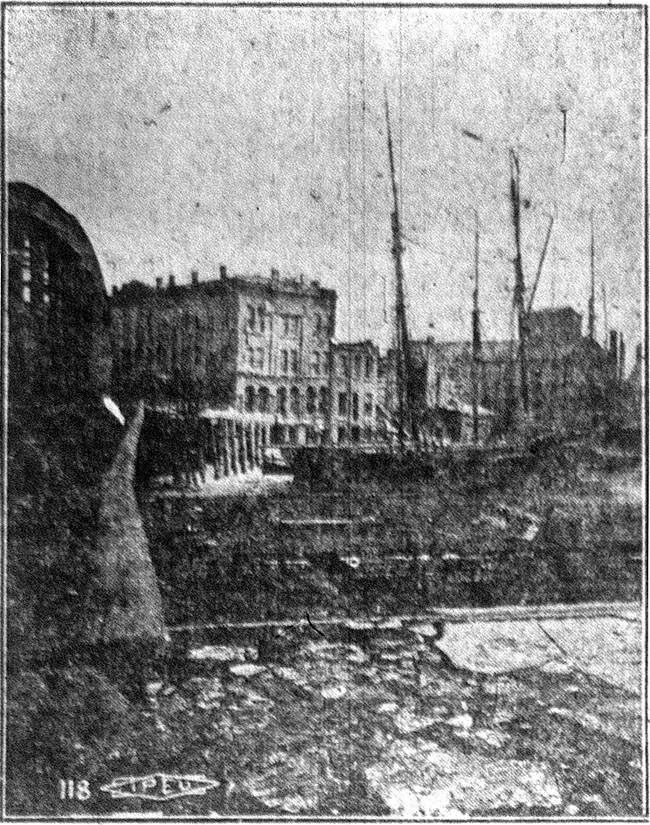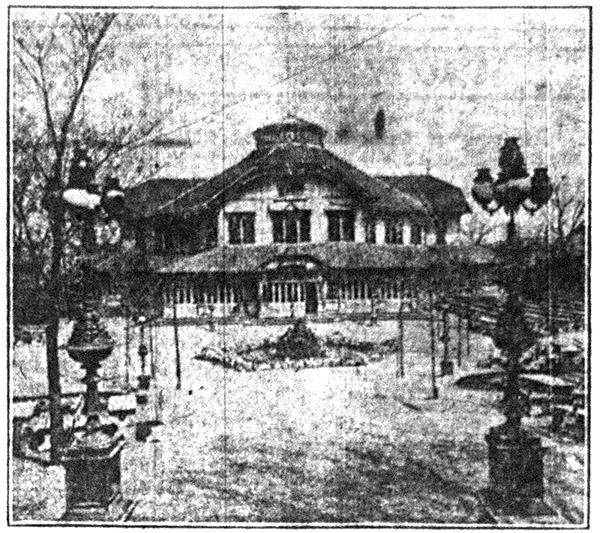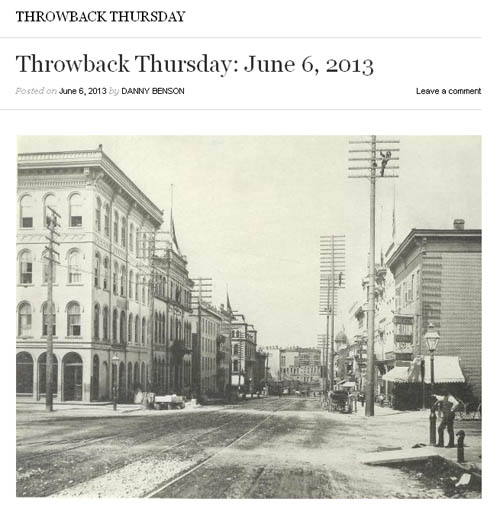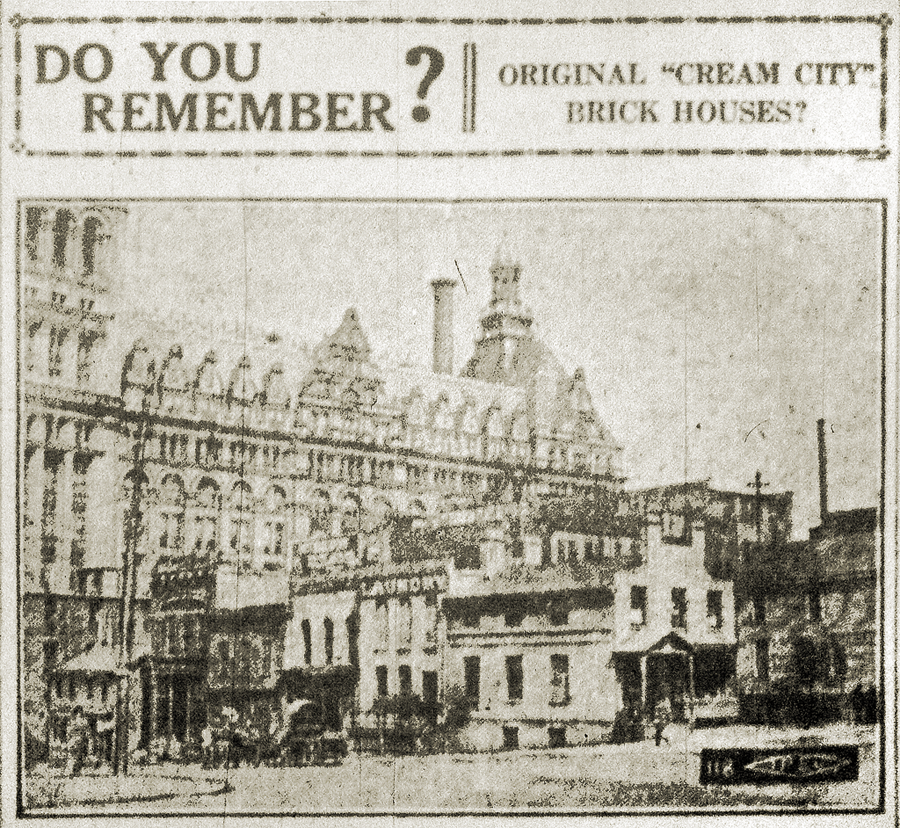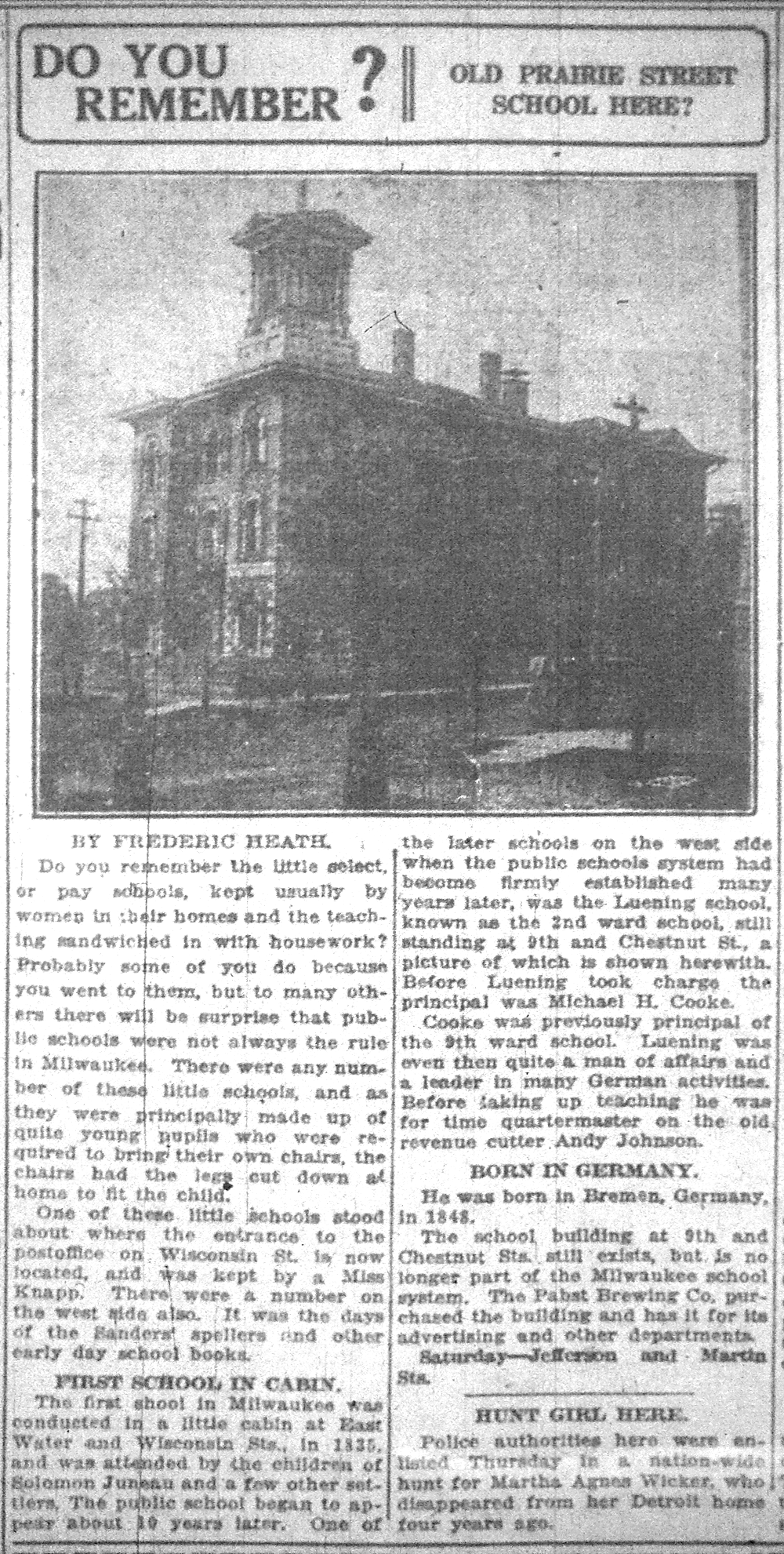This is another article in the series written by Frederic Heath in the Milwaukee Leader newspaper during 1920-1921.
The map below shows a red dot from where the photo was taken, looking north across the river. To the left of the dot is the original Reed Street Union Depot. Some of the street names have obviously been changed: Reed Street is South 2nd Street, Lake Street is Pittsburgh Avenue

The Milwaukee Leader – June 1, 1920
Do You Remember?
OLD WALKER’S POINT WOODEN BRIDGE?
By Frederic HeathThanks to an early day fire we have the accompanying view of the old Axtell house and the old Walker’s Point wooden bridge. The fire gutted the buildings west of the old hotel and even caught on the hotel cornice, but damaged it but slightly. It was quite the habit for photographers to get to work in those days when there had been a fire, hence the picture.
The hotel center of Milwaukee has moved about a good deal since the earliest days. When the few who visited the town came over the trails the hotels were confined principally to the east and west sides: that is, there was the original Cottage Inn on East Water St., the Bellevue house, at Broadway and Wisconsin Sts., and the Cabbage Hollow house on the east side, all situated close by the end of the Sauk Trail, and the American House, formerly Tavern, over in Kilbourntown.
THEN TO HURON ST.
When steamers and schooners began to bring settlers and merchandise, and finally when piers were run out in the lake to save transferring the cargoes and passengers to little tow boats, Huron St. was the big street and the east side had the hotel monopoly. This died away when the railroads came in – or were “built out” from Milwaukee – and the depots were located principally on the south side. The histories of the day refer to the Axtell house as the “favorite hotel with the traveling public” and there were numerous other south side establishments.The Axtell was built in 1860 and was enlarged in 1872. It was built by William Axtell. He had been the manager of the Clinton house, then the big south side hotel, and later went to California for his health. On returning, he joined with Richard B. Ricketson in conducting the Cream City house at Ferry and South Water Sts. Meantime he erected the Axtell Blk., diagonally across the corner, and when the Cream City was unable to accommodate its entire patronage he turned the new block into a hotel. The Cream City afterward became the Ricketson house.
DEPOT IS RELOCATED
When the union depot was relocated on the west side, the south side hotels withered up like mushrooms, and today there is hardly a vestage left. The row of small hotels across from the old depot on Reed St. have been wiped out of existence and replaced by cold storage and agricultural implement buildings. The life and bustle of Reed St. is gone. The old Lake house on Lake St., is no more and the old Metropolitan on Hanover and Florida Sts., was long ago turned into a railway men’s YMCA.The Cabbage Hollow house referred to was as unpretentious as it was early. Cabbage Hollow was, as its name implies, not a gully. It was a gentle depression that deepened as it approached the river and reached level ground at about the middle of Jefferson St., between Biddle and Martin. The origin of its name would appear to be obvious.

